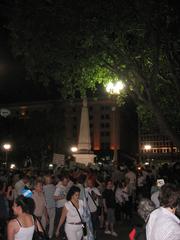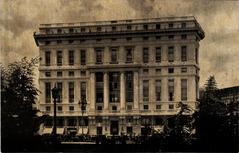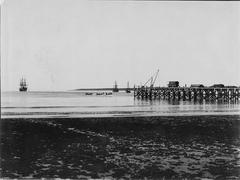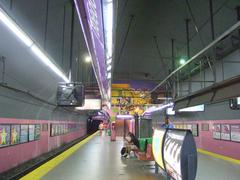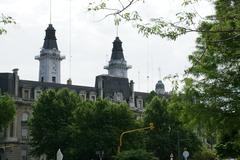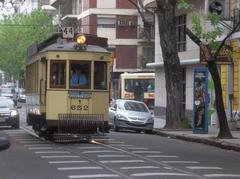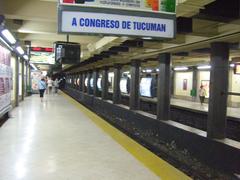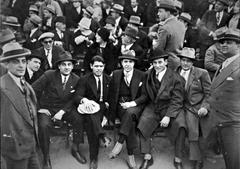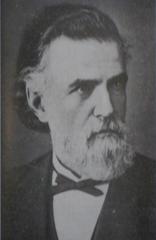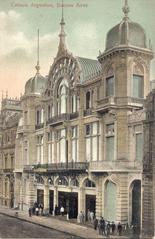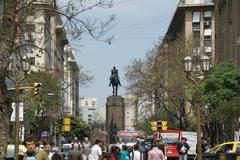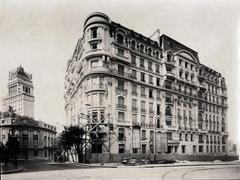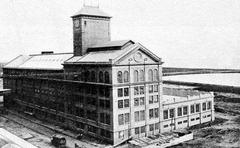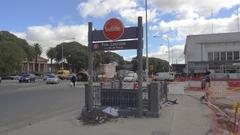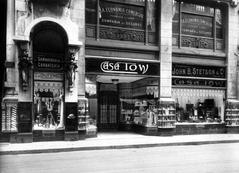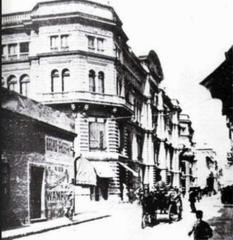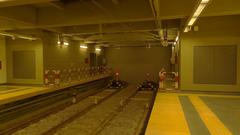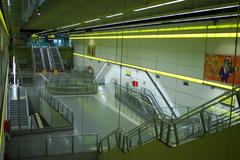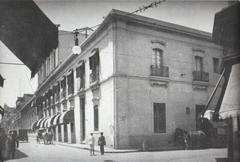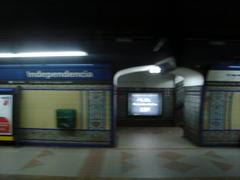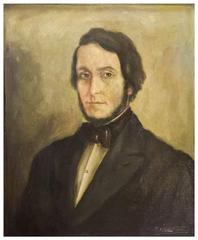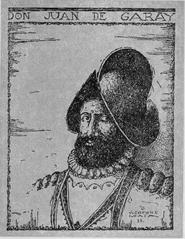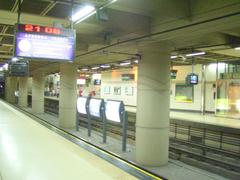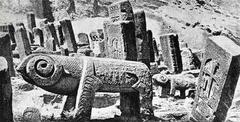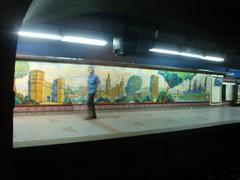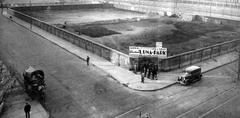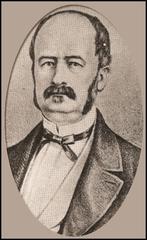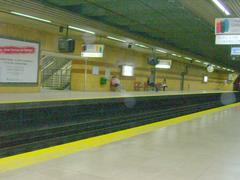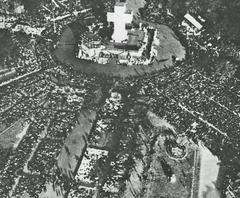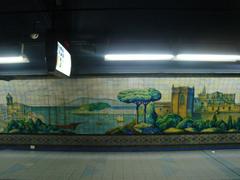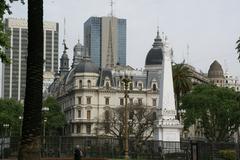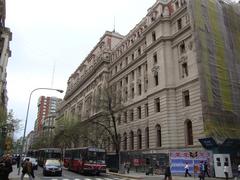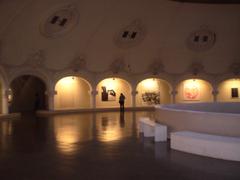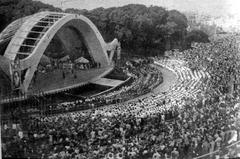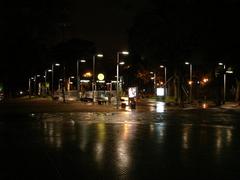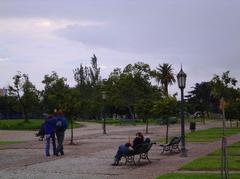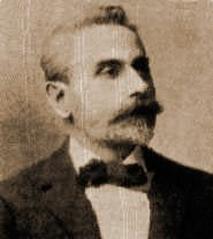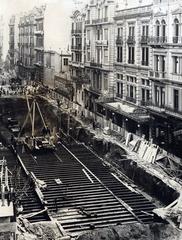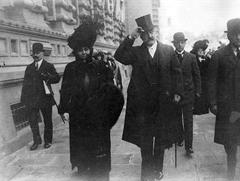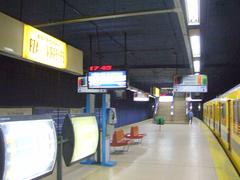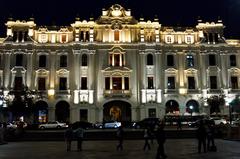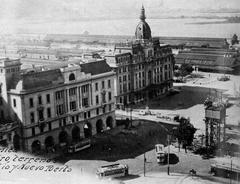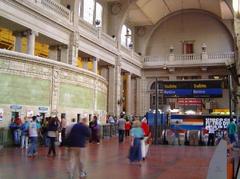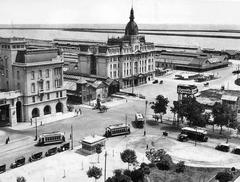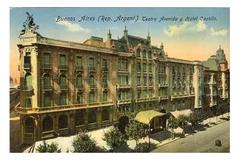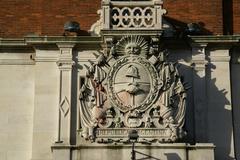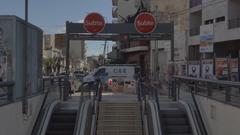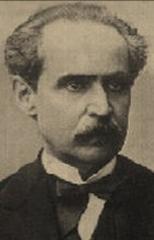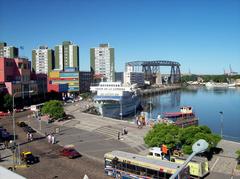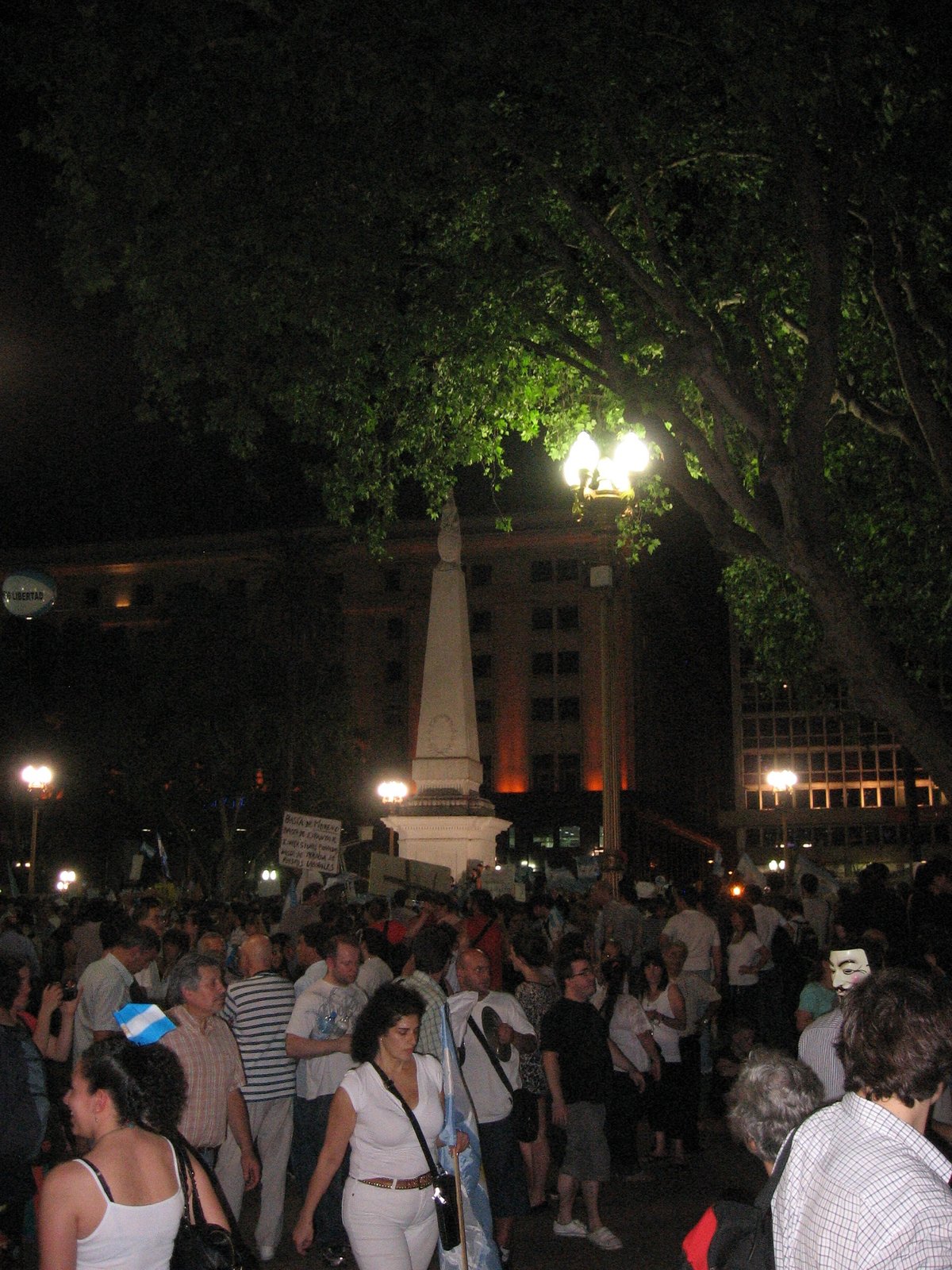
Visiting Pirámide de Mayo: Hours, Tickets, and Historical Significance in Buenos Aires
Publication Date: 24/07/2024
Introduction: Overview and Importance of Pirámide de Mayo
The Pirámide de Mayo, an iconic monument situated in the heart of Buenos Aires’ Plaza de Mayo, holds a significant place in Argentina’s rich historical and cultural tapestry. This monument, first inaugurated on May 25, 1811, commemorates the first anniversary of the May Revolution—a pivotal event that marked the beginning of Argentina’s journey towards independence from Spanish colonial rule (Wikipedia). Over the years, the Pirámide de Mayo has evolved from a simple obelisk into a profound symbol of liberty, human rights, and national identity. Its central location in Plaza de Mayo, a hub of political and social activity, further enhances its significance as a witness to the nation’s evolving history (La Nación). This guide delves into the monument’s historical background, cultural relevance, practical visitor information, and travel tips to provide a comprehensive overview for anyone planning to visit this emblematic site.
Table of Contents
- [Introduction](#introductionintroduction-overview-and-importance-of-pirámide-de-mayo)
- [Historical Background](#historical-backgroundhistorical-background)
- [Origins and Construction](#origins-and-constructionorigins-and-construction)
- [Design and Symbolism](#design-and-symbolismdesign-and-symbolism)
- [Relocation and Modifications](#relocation-and-modificationsrelocation-and-modifications)
- [Artistic Elements](#artistic-elementsartistic-elements)
- [Restoration Efforts](#restoration-effortsrestoration-efforts)
- [Historical Significance](#historical-significancehistorical-significance)
- [Modern-Day Relevance](#modern-day-relevancemodern-day-relevance)
- [Cultural Impact](#cultural-impactcultural-impact)
- [Visitor Information](#visitor-informationvisitor-information)
- [Visiting Hours](#visiting-hoursvisiting-hours)
- [Tickets](#ticketstickets)
- [Guided Tours](#guided-toursguided-tours)
- [Travel Tips and Nearby Attractions](#travel-tips-and-nearby-attractionstravel-tips-and-nearby-attractions)
- [Travel Tips](#travel-tipstravel-tips)
- [Nearby Attractions](#nearby-attractionsnearby-attractions)
- [Special Events](#special-eventsspecial-events)
- [FAQ](#faqfaq)
- [Conclusion](#conclusionconclusion-summary-and-final-thoughts)
- [References and Further Reading](#references-and-further-readingreferences-and-further-reading)
Historical Background
Origins and Construction
The Pirámide de Mayo was inaugurated on May 25, 1811, to commemorate the first anniversary of the May Revolution of 1810. The Junta Grande decided to erect this monument in March 1811, with construction overseen by Pedro Vicente Cañete, a master builder from Asunción, Paraguay (La Nación). Initially placed on the western side of the Plaza de Mayo, the monument was divided into two sections by the Recova building.
Design and Symbolism
Although designed as an obelisk, it has always been referred to as a pyramid. Originally a simple structure intended to be temporary, its symbolic importance grew, leading to modifications. In 1856, Prilidiano Pueyrredón, a prominent Argentine painter and architect, enhanced the design, constructing a new pyramid over the original foundations (Wikipedia).
Relocation and Modifications
In 1912, the Pirámide de Mayo was moved 63 meters east to make way for a larger monument that was never built. This was part of a broader urban development plan for the Plaza de Mayo (La Nación). The monument now stands at the center of the Plaza de Mayo, a site of numerous significant events in Argentine history, including political demonstrations and public gatherings (Wikipedia).
Artistic Elements
The Pirámide de Mayo is crowned with a statue of Liberty by French sculptor Joseph Dubourdieu. This statue, featuring a figure wearing a Phrygian cap, represents Argentina’s struggle for independence and liberty. The entire monument measures 18.76 meters in height (Wikipedia).
Restoration Efforts
Over the years, the Pirámide de Mayo has undergone several restoration efforts. Notably, in 2010, coinciding with the bicentennial celebrations of the May Revolution, José Mastrángelo led a restoration that included structural repairs and general repainting (La Nación).
Historical Significance
Modern-Day Relevance
In recent years, the Pirámide de Mayo has become a symbol of human rights activism. On March 10, 2005, the Legislature of Buenos Aires declared the area a “Historic Site,” partly in recognition of the Mothers of the Plaza de Mayo, who protest the disappearance of their children during Argentina’s military dictatorship. The white headscarves of the mothers are painted on the ground around the monument, serving as a reminder of their struggle for justice (Wikipedia).
Cultural Impact
The Pirámide de Mayo has inspired various forms of artistic expression, including literature, music, and visual arts. It is often featured in educational materials and tourist guides, highlighting its importance as a symbol of Argentine identity and heritage.
Visitor Information
Visiting Hours
The Pirámide de Mayo is accessible 24/7, as it is located in a public square. However, the best time to visit is during the day to fully appreciate its details and surroundings.
Tickets
There is no admission fee to visit the Pirámide de Mayo, as it is an open public monument.
Guided Tours
While the monument itself does not offer guided tours, several walking tours of Buenos Aires include the Pirámide de Mayo as a key stop. These tours provide in-depth historical context and are highly recommended for visitors interested in Argentine history.
Travel Tips and Nearby Attractions
Travel Tips
- Wear comfortable shoes as the area involves a lot of walking.
- Bring water, especially during the summer months.
Nearby Attractions
- The Casa Rosada, Cabildo de Buenos Aires, and the Metropolitan Cathedral are all within walking distance.
Special Events
Check for any political demonstrations or public gatherings that may be taking place, as these can affect your visit.
FAQ
Q - What are the visiting hours for Pirámide de Mayo?
A - The Pirámide de Mayo is accessible 24/7 as it is located in a public square.
Q - How much do tickets for Pirámide de Mayo cost?
A - There is no admission fee to visit the Pirámide de Mayo.
Q - Are there guided tours available?
A - While the monument itself does not offer guided tours, several walking tours of Buenos Aires include the Pirámide de Mayo as a key stop.
Conclusion: Summary and Final Thoughts
Visiting the Pirámide de Mayo offers more than just a glimpse into Argentina’s past; it provides a profound connection to the nation’s enduring struggles and triumphs. As a symbol of the May Revolution, the monument stands as a testament to Argentina’s quest for independence and its ongoing fight for human rights, illustrated poignantly by the presence of the Mothers of the Plaza de Mayo (Turismo Buenos Aires). The rich historical and cultural layers of the Pirámide de Mayo, coupled with its artistic and architectural value, make it an essential stop for history enthusiasts, architecture buffs, and casual travelers alike. With no admission fees and round-the-clock accessibility, this monument remains a democratic space, inviting all to reflect on Argentina’s vibrant history and resilient spirit. Whether you are exploring the nearby Casa Rosada, the Metropolitan Cathedral, or simply soaking in the atmosphere of Plaza de Mayo, the Pirámide de Mayo promises a deeply enriching experience (Wikipedia). Plan your visit today and immerse yourself in the rich cultural heritage of Buenos Aires.
